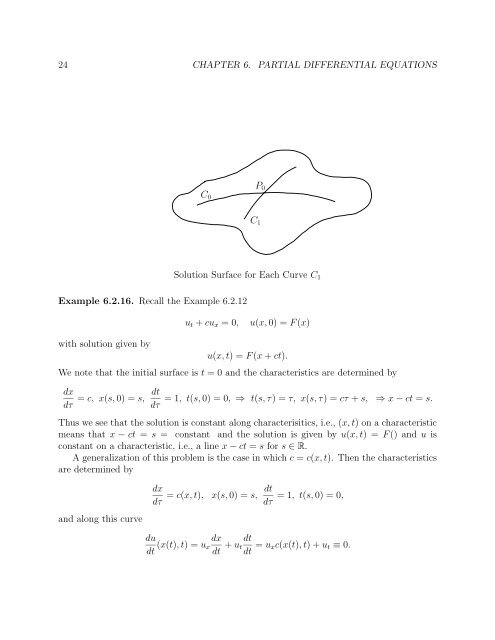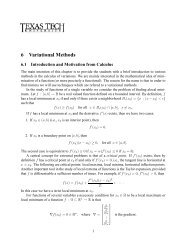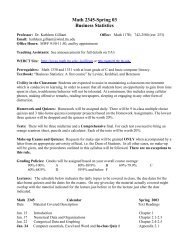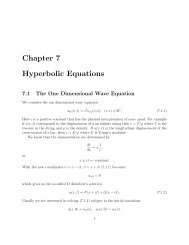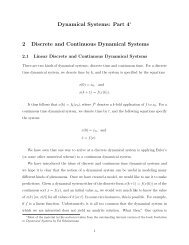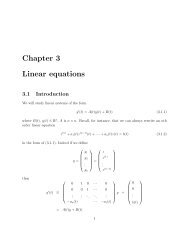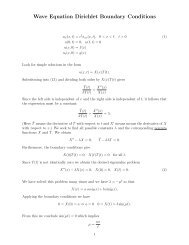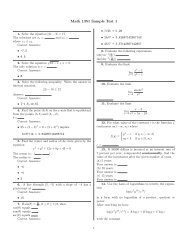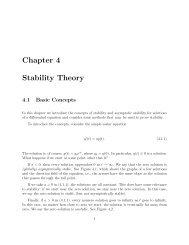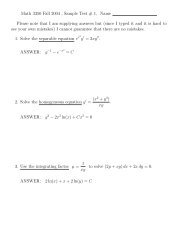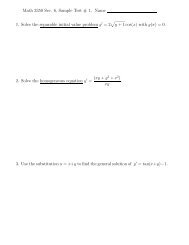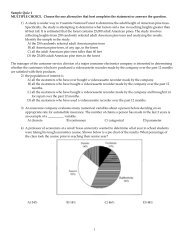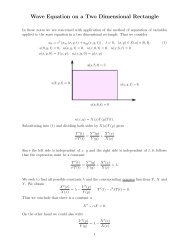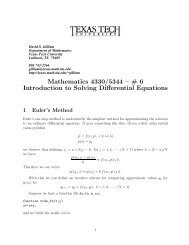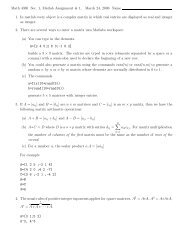Chapter 6 Partial Differential Equations
Chapter 6 Partial Differential Equations
Chapter 6 Partial Differential Equations
Create successful ePaper yourself
Turn your PDF publications into a flip-book with our unique Google optimized e-Paper software.
24 CHAPTER 6. PARTIAL DIFFERENTIAL EQUATIONS<br />
P 0<br />
C 0<br />
C 1<br />
Example 6.2.16. Recall the Example 6.2.12<br />
Solution Surface for Each Curve C 1<br />
u t + cu x =0,<br />
u(x, 0) = F (x)<br />
with solution given by<br />
u(x, t) =F (x + ct).<br />
We note that the initial surface is t = 0 and the characteristics are determined by<br />
dx<br />
dτ = c, x(s, 0) = s, dt<br />
=1,t(s, 0)=0, ⇒ t(s, τ) =τ, x(s, τ) =cτ + s, ⇒ x − ct = s.<br />
dτ<br />
Thus we see that the solution is constant along characterisitics, i.e., (x, t) on a characteristic<br />
means that x − ct = s = constant and the solution is given by u(x, t) =F () and u is<br />
constant on a characteristic, i.e., a line x − ct = s for s ∈ R.<br />
A generalization of this problem is the case in which c = c(x, t). Then the characteristics<br />
are determined by<br />
and along this curve<br />
dx<br />
dτ<br />
= c(x, t), x(s,<br />
0) = s, dt<br />
dτ<br />
=1,t(s, 0)=0,<br />
du<br />
dt (x(t),t)=u dx<br />
x<br />
dt + u dt<br />
t<br />
dt = u xc(x(t),t)+u t ≡ 0.


